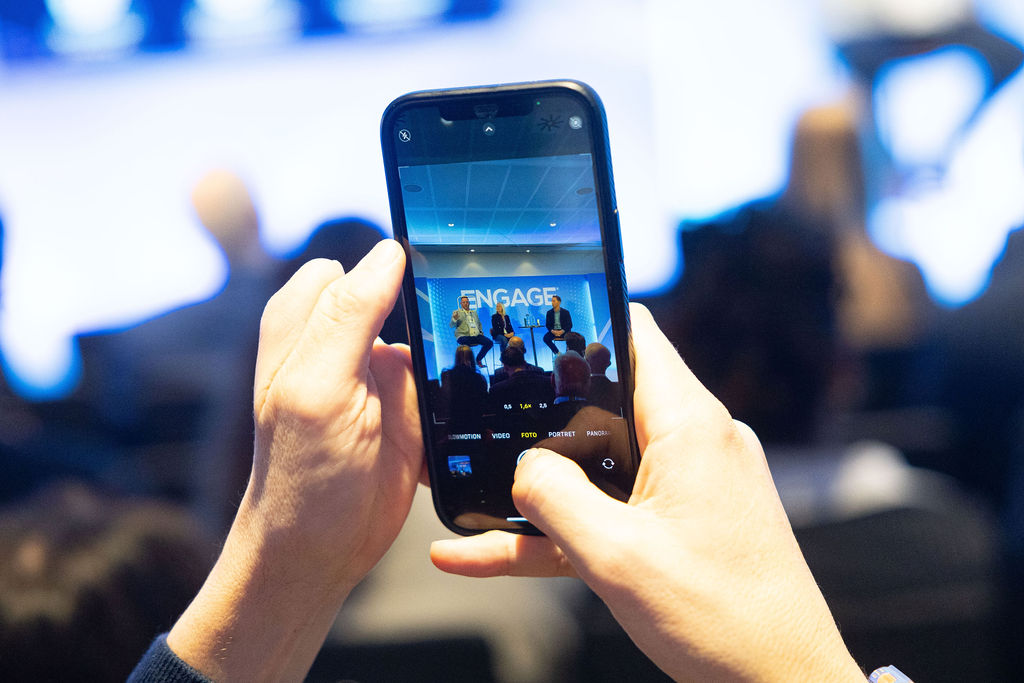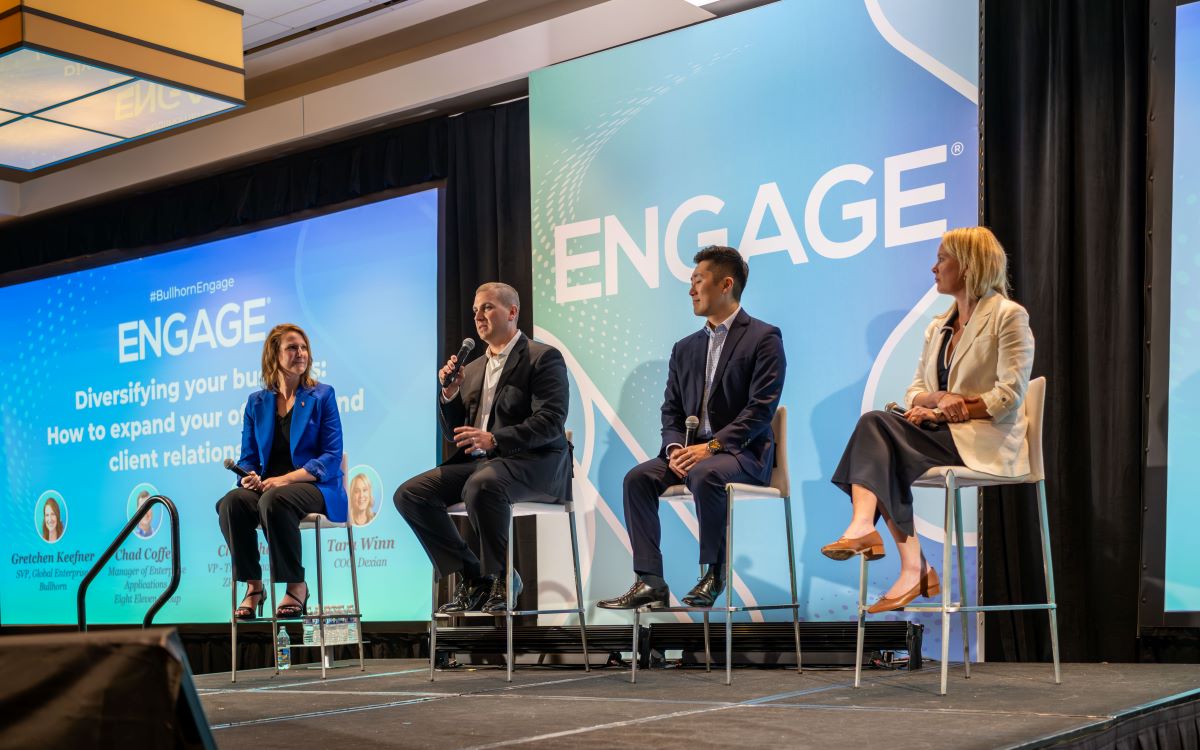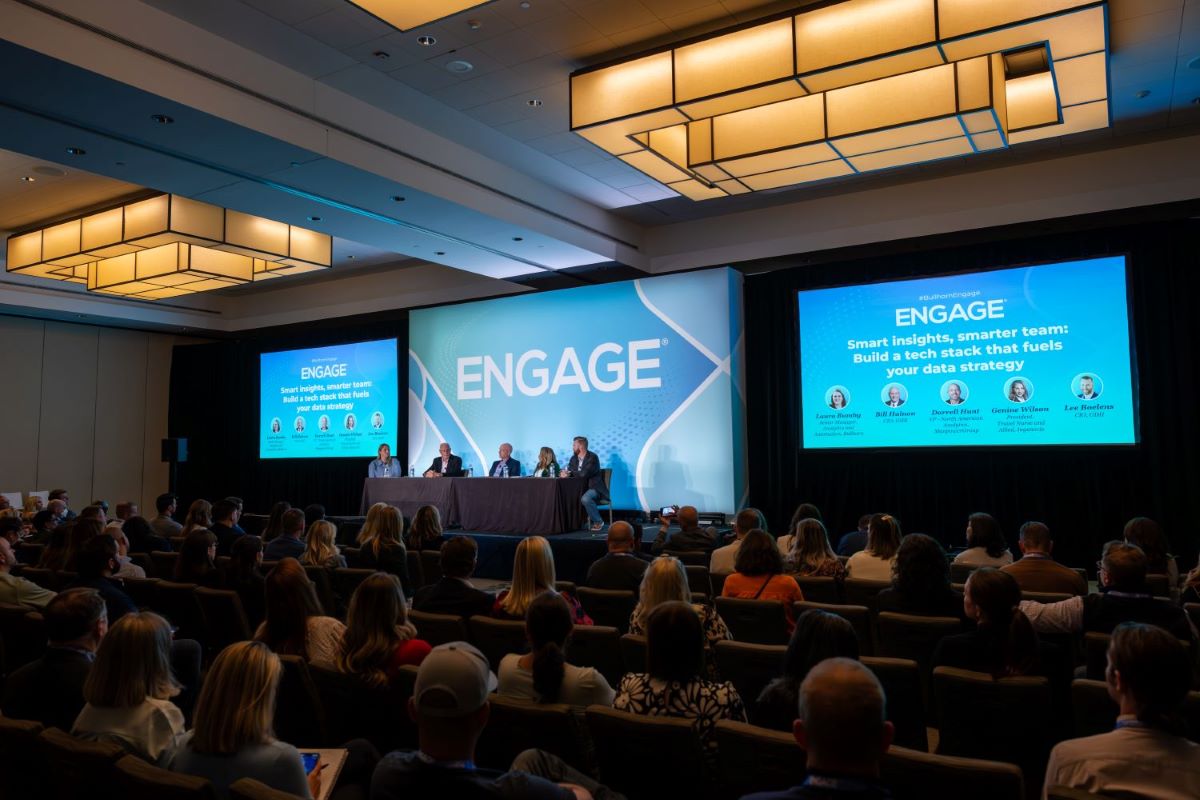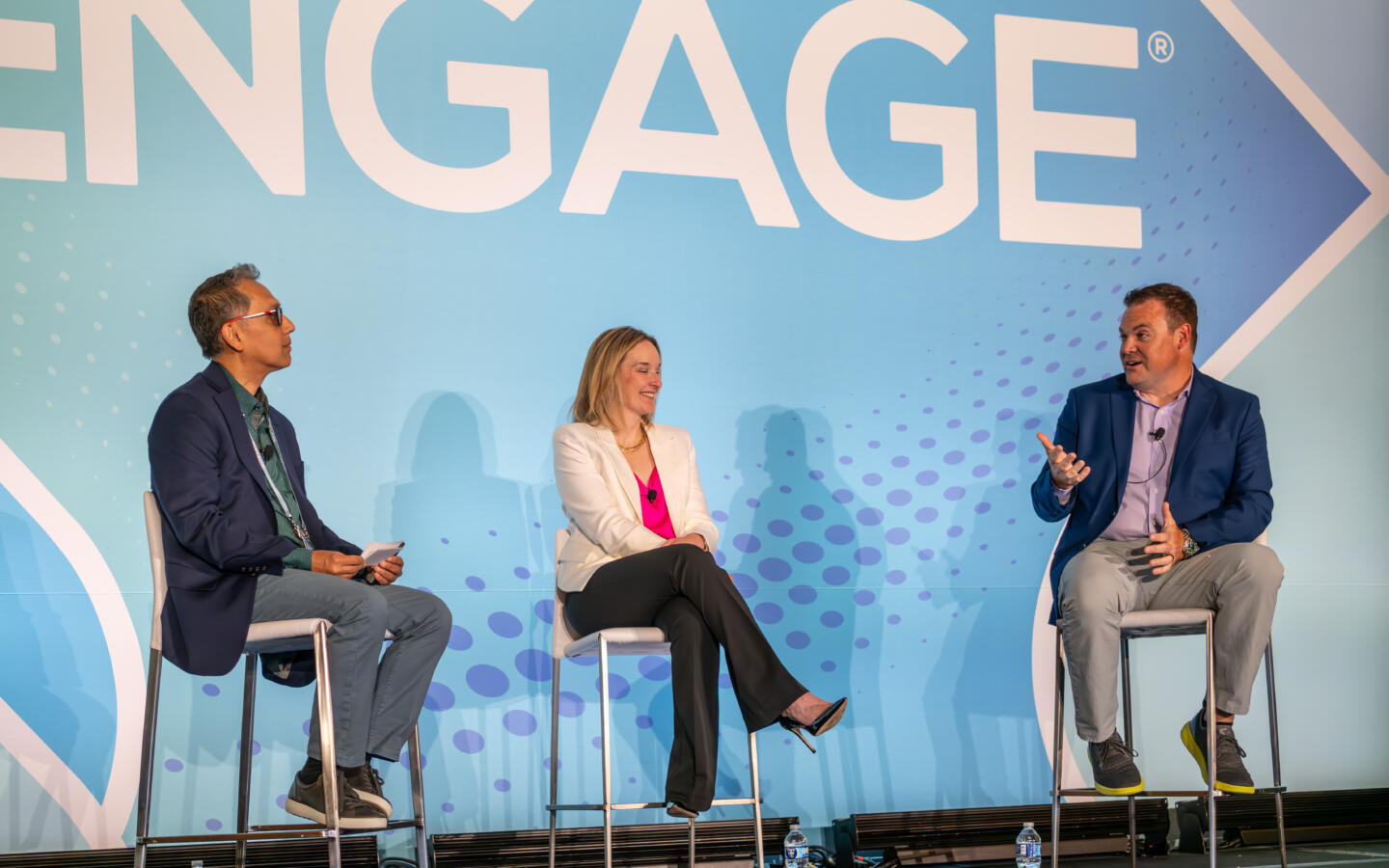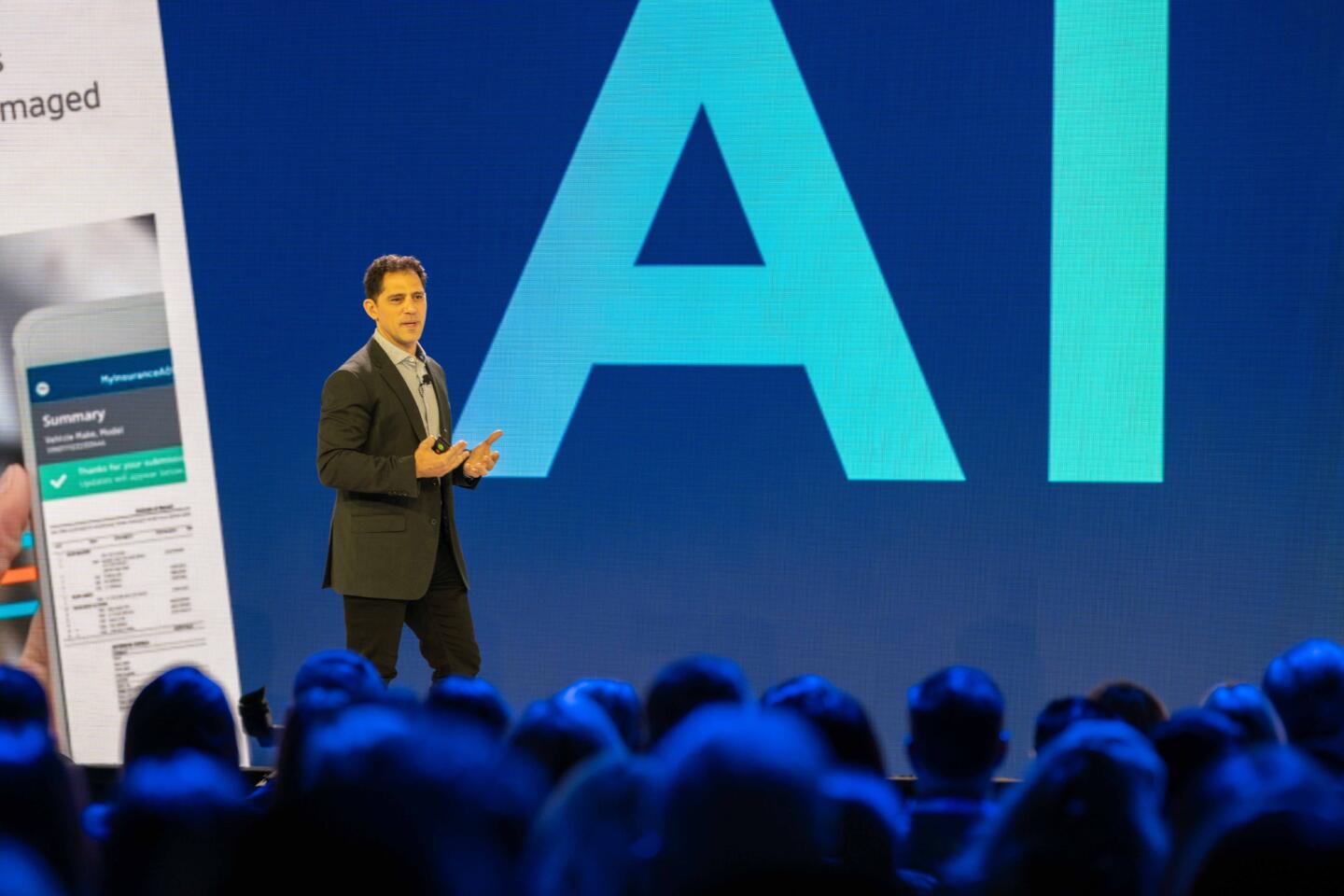Highlights from Engage 2018
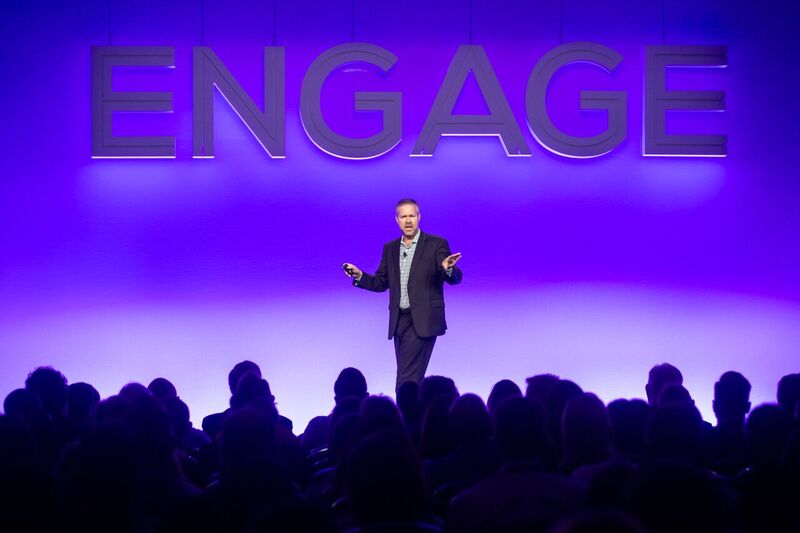
Paul Allen: Unlocking the Strengths of All People Everywhere
While work is important, Allen said that’s not the only thing that’s important. Human elements, relationships and family members are important.
He recalls when he watched Alex Haley’s “Roots,” along with over 130 million other Americans, which, at that time, was the largest TV viewership ever recorded by Nielson. Alex Haley said that in all of us is a hunger to know our heritage, who we are and where we came from. Allen says that’s his connection to Ancestry.com and Strengthfinder, which helps people define their potential. “As more people discover where they came from and their strengths, we have a better opportunity to experience a fulfilling life.”
Allen said it’s also important to understand and appreciate that people are different.
He asked audience members to stand up when the following always applied to them (and sit down when it didn’t), including:
- You always talk to people in elevators and on planes.
- You always make a list of things to do every day and stick to it — even on weekends, even on holidays.
- You always have to clean your house or apartment before you can relax.
- You trust your intuition – that’s the best way to make a decision.
Various members of the audience were standing and sitting as each question was asked and Allen reiterated that people have different strengths and preferences that make them unique.
Then he asked the audience to stand if they thought they were a genius at anything. A handful of people stood up. Allen quoted Albert Einstein, who says, “Everyone is a genius, but if you judge a fish by its ability to climb a tree, you’ll think it’s stupid.”
Allen said that on average, every human being is better in something than 10,000 other people. But how many people are lucky enough to discover what that is and spend time developing that strength?
Unlocking strengths in all your employees:
1. Value people
2. Manage weaknesses
3. Focus on strengths(Paul Allen at #BullhornEngage)
— Tom Bennett (@_TomBennett) June 13, 2018
“Are people an asset or a liability? This is a question Wall Street and people in the boardroom need to answer,” Allen said. Instead of thinking of people as “messy,” he said there’s a different approach.
For example, Chieh Huang, CEO of Boxed.com, discovered that 75 percent of his employees could be laid off due to automation, but he didn’t lay off anyone and even paid to send workers back to school because he felt that people were important.
During the financial crisis of 2008, Bob Chapman, CEO of Barry-Wehmiller was informed that he would need to lay off 30 percent of the company. Instead, he decided that everyone, including himself, would take an unpaid 4-week furlough at some point during the year.
“If we focus with what’s right with people, we’re much better off than if we look at what’s wrong,” Allen said. Focus on strengths — what’s the right role for this person based on their natural talents? In talent management, it’s our role to help people discover their natural strengths and abilities.
Despair deaths in America are skyrocketing. We live in a toxic culture where people are on 24-hour news channels attacking people they don’t even know, Allen said. But, “we all have potential.” He says 5th graders are the most engaged, according to Gallup. But by 9th grade engagement levels drop dramatically. Levels drop again in 12th grade and again in the workplace. But he says life shouldn’t be lived in a crescendo.
"Life should be lived in a crescendo as you discover and develop your own talents and potential." #bullhornengage @Bullhorn @paulballen Awesome.
— Lauren B. Jones (@lbuffjones) June 13, 2018
People who focus on using their strengths each day are three times more likely to report an excellent quality of life than those who don’t. “We can make this a strengths-based world. Soar with your strengths,” Allen concluded.
The Human Side of Hiring
Indeed’s Jeffery Johnson talked about connection. When we think about human connection, we think first of family and our closest friends, he said. But if we look at research, most connections happen at work and in the community.
Why is human connection so important in the workplace? Research shows that the strongest workplaces are marked by a strong human connection. Social connections can impact the bottom line. Having a best friend at work is one of the biggest differentiators in being happy at work.
“Recruiting, more than any other function, is built on human connection,” he said. Purpose and human connection play important roles at every stage in the recruitment process. During the interview process, all candidates look for a human connection. They want meaningful interactions. They want to be treated like a person. Candidates today are first and foremost going to optimize for happiness.
So how can companies foster connections? First, make sure you have the right people. Don’t make the mistake of weighing too much on skill. Make sure they have the personality to fit into a company. Let recruiters be advocates for talent. “Recruiters are here to make human connections,” he said.
Jeffrey Johnson of @indeed on the human side of hiring. #BullhornEngage #staffingtrends #recruiting pic.twitter.com/b04V6XLrUE
— Bullhorn (@Bullhorn) June 13, 2018
Change Management and Organization Evolution
Jason Smith, VP of Enterprise Americas at Bullhorn, Steve Levenkron, CIO at Addison Group and Jessica Koenes, manager of technical operations at Addison Group talked about the power of the people as it relates to change management.
“When you look through implementing a solution, you’re in the ‘trough of despair’ – some people move quickly, some people don’t and some don’t move at all,” Smith said. “Change management’s goal is to change that and to realize value faster.”
Levenkron said we’re not asking the right questions. We should ask what other people need to succeed, and consider in advance what’s going to go wrong.
Levenkron identifed three key risks:
Chasing the Shiny Object
There are many great tools are out there. Everyone asks, “why aren’t we integrating with this or that?” But he suggested getting clear about why you’re integrating. The goal is not just to put technology in, but to solve problems.
#ChangeManagement tips with Steve Levenkron of @Addison__Group #BullhornEngage #staffingtrends pic.twitter.com/kXiexVcCRb
— Bullhorn (@Bullhorn) June 13, 2018
Resistance to Change
Be on the lookout for passive resistance — the people in the background will resist change. “It’s worth it to win these people over because a converted resistor is your best evangelist,” Levenkron said.
Unanticipated Impact
Change can produce unforeseen negative business or technical issues. “Measure the net impact — do the benefits outweigh the losses?” He also says to identify the true cause — is the problem the result of incorrect value assumptions or faulty execution?
Koenes presented a case study on Addison. The company wanted to create one cohesive platform. They partnered with Bullhorn and built a change management strategy. “We needed to understand all of the cogs: how does this affect finance, branch managers, everyone that it touches,” Koenes said. “Be sure your change management strategy is comprehensive for the company.”
Smith told the audience that they have to plan ahead of time and you have to budget for these changes. “Why are we doing this? There’s many ways to calculate ROI,” he says. “A lot of times, we’re just asked to do it, but you need to know your expected ROI.”
Great start to #BullhornEngage with insights from @Addison__Group and @JasonRSmith12 “We need to add things to our ecosystem; but we need to do them strategically” #staffing @Bullhorn pic.twitter.com/9RgYeTt2oL
— Hope Nattell (@HopeNattell) June 13, 2018
Where Bullhorn Is Going Next
Evolution of the Middle Office
Ed Holmes and Kendra Cato from Bullhorn talked about how Bullhorn will focus on the middle office.
Holmes started by talking about the evolution of the middle office. “With the early ERP systems, it was the era of ‘make it work then don’t touch it.’” By the early 2000s, we entered the era of integrated talent management followed by roll-up of legacy systems. In the late 2000s, we saw an introduction to 3rd-party technologies.
In 2018, the Bullhorn focus is on staffing and putting all of the pieces in place together.
Cato provided a look at where we are today:
- Contingent labor is growing. There’s a $3.5 trillion gig economy.
- 76% of firms submit candidates through a VMS.
- We’re seeing new, disruptive technologies.
- There are 6.2 million unfilled job openings in the U.S.
Cato explains that because of all those factors, staffing firms have seen an increase in competition, more sophisticated clients, a higher volume of VMS, increasing margin pressure, and more complex work arrangements.
Holmes says Bullhorn is helping staffing firms by designing frictionless payment and billing. The goal is a tightly integrated system from front to back, flexibility in bill and pay conditions, rules of engagement to manage customer engagements, and VMS automation from start to finish.
Holmes says designing for frictionless payment and billing includes 3 areas:
- Time and expense.
- Rules and compliance.
- Revenue and billing.
Additional features include sending messages to employees to let them know that their time hasn’t been turned in. “Also, you can wake someone up at 7am and then find out who is not showing up for work – the earlier you know, the greater chance you can find a replacement.”
Bullhorn + Salesforce
Brandon Metcalf is SVP of Salesforce at Bullhorn and the co-founder and former president of TalentRover, a SaaS company that was acquired by Bullhorn in March of 2018.
In one of the first breakout sessions of the day, Metcalf told the crowd that this is the first time in Bullhorn’s history that the company has a dual-platform strategy. The reason? Bullhorn wants to provide customers with the power of choice so they can choose whichever platform they want. And, he says, Salesforce apps have grown like crazy, resulting in:
- 913 customers.
- 53,000 users.
- More than 60,000 community users.
- Users in over 40 countries.
Looking ahead, Bullhorn is committed to ongoing investment in its partnership with Salesforce, focused on solutions for the middle and back office like time, expense and invoicing.
Check out the full agenda for the next two days of Engage Boston 2018.





